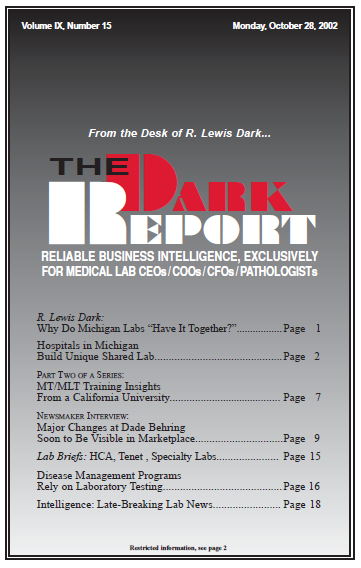CEO SUMMARY: Laboratory administrators from 15 San Francisco Bay Area hospitals recently approached their CEOs and requested a five-year funding commitment of $1.5 million to train and expand the supply of CLSs and MTs. One key element in this effort was the enthusiastic support of those local colleges and universities willing to restart dormant laboratory …
MT/MLT Training Insights From Calif. University Read More »
To access this post, you must purchase The Dark Report.


